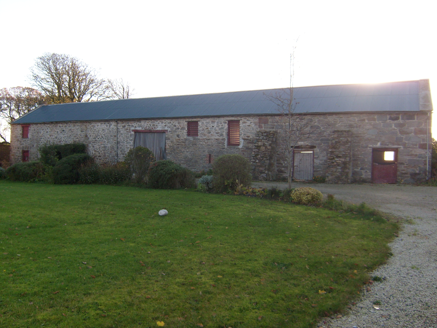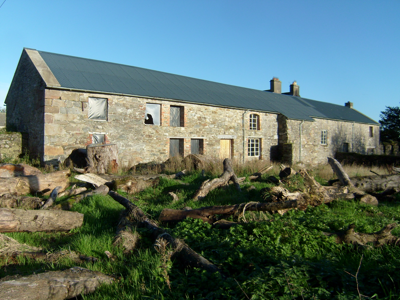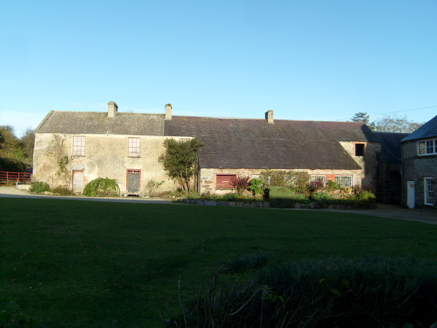Survey Data
Reg No
40904616
Rating
Regional
Categories of Special Interest
Architectural
Original Use
Farmyard complex
In Use As
Farmyard complex
Date
1770 - 1790
Coordinates
226167, 419229
Date Recorded
30/11/2016
Date Updated
--/--/--
Description
Courtyard of farm buildings, built c.1780, to rear of Fort Stewart, comprising multiple-bay two-storey block to southwest of house, seven-bay two-storey block to northeast of house having five-bay addition to front and multiple-bay single-storey block attached to southeast and two-bay two-storey former house attached to northwest. Second yard to west, having multiple-bay single-storey block and three-bay single-storey former house with attic, flanking gate at northwest side of yard. Southwest block has pitched corrugated-iron roof with rendered copings and replacement rainwater goods, rubble stone walls with dressed quoins and with two stone buttresses to front wall and stone-built projection to rear wall, and square-headed openings with replacement concrete and some stone voussoirs with replacement doors and windows. Former house to northeast block has pitched corrugated-asbestos roof with rendered chimneystacks, rendered walls and square-headed openings with boarded windows and timber battened door with paned overlight; rest of block has slate roof, catslide to five-bay addition, with rendered chimneystack, rubble stone walls and square-headed openings with brick reveals and voussoirs. Block to second yard has four-bay open part to larger building, lean-to corrugated-iron roofs and rubble stone walls with square-headed openings having brick reveals and voussoirs. Smaller block to this yard has pitched slate roof, partly rendered rubble stone walls and square-headed openings, one with timber battened door.
Appraisal
An extensive group of outbuildings associated with Fort Stewart that contributes to the group value and setting of the former country house. The buildings create a courtyard with the rear facade of the house and exhibit good-quality masonry, enlivened by red brick reveals. They are of social interest, as they recall the extensive resources required to run and maintain a country house in the eighteenth and nineteenth centuries.





